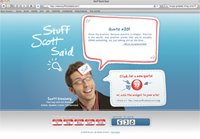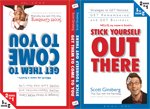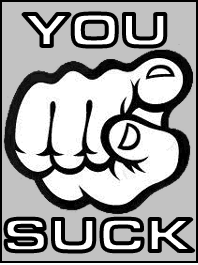 Here’s a question my readers, audience members and clients often ask me:
Here’s a question my readers, audience members and clients often ask me:
“How do you decide what you’re going to write about each day?”
You don’t.
Creativity doesn’t come FROM you – it comes THROUGH you.
The challenge when you sit down to write every morning isn’t DECIDING what you’re going to write, but rather, LISTENING for what wants to be written.
Naturally, this approach is tricky for a lot of writers. After all, it suggests surrender. And it requires you to relinquish creative control.
But that’s the best part about creativity:
It’s nothing more than active listening followed by active rendering.
Can’t decide what to write about today? Consider three practices to help you listen for what wants to be written:
1. Morning Pages. Along with physical exercise and daily appointments with yourself, Morning Pages are the single most important component to a profitable writing practice.
Here’s how they work: For the first thirty minutes of your day, just sit down and start writing. Whatever is swirling around in your brain, get it down. No structure. No stopping. No grammar. No spelling checks.
Just puke your truth all over the page. No matter how stupid, incoherent or terrible your words sound. Give yourself permission to write three pages of nonsensical garbage. Nobody will ever see it but you.
WHY IT WORKS: When you honor your first awakening thoughts, two things happen. First, you clear away all the crap floating around in your inner world. This is akin to spending an hour at the driving range before playing 18 holes. It’s all about getting the shanks out.
Secondly, you open the floodgates to whatever ideas and thoughts hold the most importance in your brain at that moment. By relaxing into the page, this form of meditative freewriting allows the self-organizing system of your brain to prioritize its best stuff.
2. Invocation. Creativity hinges on your ability to listen (then render) whatever your heart is currently whispering to you. So, approaching this process with a posture of humility and honor is the best way to open yourself to receiving inspiration.
The secret is to introduce a ritual of invocation. Calling on The Muse. The Great Spirit. God. The Collective Unconscious. Whatever. It doesn’t matter what you call it; it only matters THAT you call it. Personally, I found the invocations from Eric Maisel’s Ten Zen Seconds to be easy, relaxing and effective.
Of course, you’re free to customize this practice around your own preferences. For example, satanic rituals are perfectly acceptable, as long as you wipe the goat’s blood off your keyboard.
WHY IT WORKS: No matter what you believe – or don’t believe – creativity is spiritual. Period. Not religious, but spiritual. I triple dog dare you to prove me otherwise. So, to listen for what wants to be written, all it takes is a little trust.
Trust that your inner resources will provide for you. Trust that you are richly supported. Trust that when you expect nothing, failure is impossible. And trust that whatever truth needs to be expressed at this very moment will eventually stand up and say, “Here I am! Write me!”
3. Listen to your body. The stupidest mistake a writer can make is to sit down at his desk and stare at a blank page until something comes. I guarantee this will (a) scare your brain, (b) stress out your body and (c) piss off your Muse. Look: You’re making it too hard on yourself. Don’t attempt to start from scratch.
Instead, spend a few minutes in your Content Management System searching through your collection of module ideas, words, phrases and sentences. See what jumps out at you. Listen to your body, not your brain. Listen for reactions, not opinions.
For example, if a particular sentence causes you to react physiologically in any way – a ping in your stomach, a chuckle under your breath, a gasp of amazement – write about that. Heed your physiology. Whatever manifests in your body is probably what wants to be written.
WHY IT WORKS: The idea of “staring at a blank page,” as romantic and classical as it sounds, is not a smart move. By doing so, you significantly decrease the probability of discovering what wants to be written.
On the other hand, when you flood your brain with hundreds of (seemingly unrelated) ideas – even the ones with remote relevance – you allow the unconscious integration process to cognitively distribute those ideas in ways a blank page never could.
You enhance your ability to be inspired and find the one sentence that absolutely defines the moment. And that’s when you think, “Ooh! That’s the one. That’s what I should write about today…”
REMEMBER: Creativity comes through you, not from you.
You can’t decide what to write.
You can only listen for what wants to be written.
LET ME ASK YA THIS…
What are you listening to?
LET ME SUGGEST THIS…
For the list called, “9 Things Every Writer Needs to Do Every Day,” send an email to me, and you win the list for free!
* * * *
Scott Ginsberg
That Guy with the Nametag
Author, Speaker, Coach, Entrepreneur
[email protected]
 Need to build your Thought Leadership Platform?
Need to build your Thought Leadership Platform?
Perhaps my monthly (or yearly) coaching program would help.
Rent Scott’s Brain today!

 If you don’t set healthy boundaries for yourself, people will set them for you.
If you don’t set healthy boundaries for yourself, people will set them for you. Who’s quoting YOU?
Who’s quoting YOU? Businesses that get talked about GET more business.
Businesses that get talked about GET more business.  You could be the greatest salesperson in the world.
You could be the greatest salesperson in the world. Here’s a quick summary of every book, article or blog post ever written on the topic of getting more referrals:
Here’s a quick summary of every book, article or blog post ever written on the topic of getting more referrals: The world’s FIRST two-in-one, flip-flop book!
The world’s FIRST two-in-one, flip-flop book! Halfway through a recent
Halfway through a recent 
 “A trusted source who moves people with innovative ideas.”
“A trusted source who moves people with innovative ideas.” Doors are for amateurs.
Doors are for amateurs. When my publishing/consulting company was just starting out, I worked nights & weekends at The Ritz Carlton to make ends meet.
When my publishing/consulting company was just starting out, I worked nights & weekends at The Ritz Carlton to make ends meet. 1. Advance the conversation. Stop the bloodsucking and start the billing. Otherwise move on. Your time is too expensive. Are people picking your brain or
1. Advance the conversation. Stop the bloodsucking and start the billing. Otherwise move on. Your time is too expensive. Are people picking your brain or